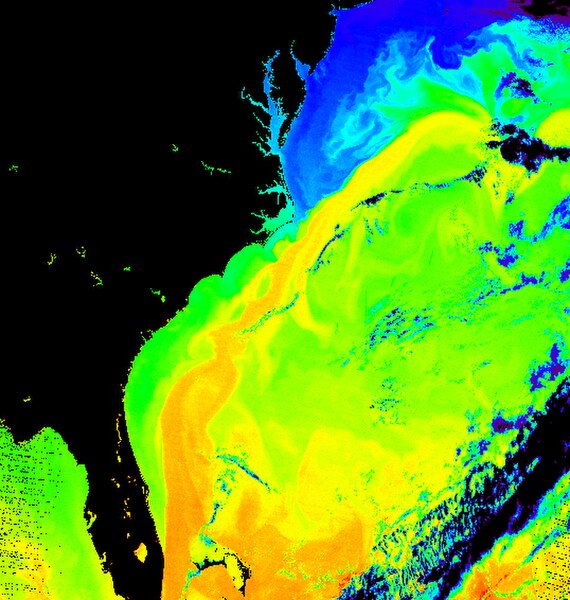A nor'easter, is a large-scale extratropical cyclone in the western North Atlantic Ocean. The name derives from the direction of the winds that blow from the northeast. The term is commonly used in the winter in New England and Atlantic Canada.
Nor'easter off the New England coast of the United States responsible for the January 2018 North American blizzard
Compass card (1607), featuring the spelling "Noreast"
Surface temperature of the sea off the east coast of North America. The corridor in yellow gives the position of the Gulf Stream.
Extratropical cyclones, sometimes called mid-latitude cyclones or wave cyclones, are low-pressure areas which, along with the anticyclones of high-pressure areas, drive the weather over much of the Earth. Extratropical cyclones are capable of producing anything from cloudiness and mild showers to severe gales, thunderstorms, blizzards, and tornadoes. These types of cyclones are defined as large scale (synoptic) low pressure weather systems that occur in the middle latitudes of the Earth. In contrast with tropical cyclones, extratropical cyclones produce rapid changes in temperature and dew point along broad lines, called weather fronts, about the center of the cyclone.
A powerful extratropical cyclone over the North Atlantic Ocean in March 2022
Approximate areas of extratropical cyclone formation worldwide
Hurricane Cristobal (2014) in the north Atlantic after completing its transition to an extratropical cyclone from a hurricane
QuikSCAT image of typical extratropical cyclones over the ocean. Note the maximum winds are on the outside of the occlusion.







